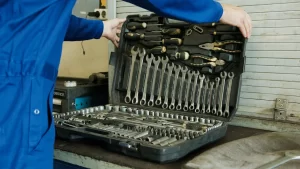Classic Car Restoration

Classic car restoration is an effort that takes both time and money, yet can result in an exquisite vehicle that stands out on the road.
Start by evaluating the current condition and price of your project car. Utilize valuation tools to establish its fair market value while taking into account potential restoration costs.
Bodywork and Painting
Classic cars are more than mere objects – they tell stories of past adventures and present day fun, with charm unsurpassed by modern vehicles. Restoring such classics is a rewarding endeavor that takes patience, skill and dedication – plus it could even bring in profit when sold on.
Before embarking on your classic car restoration project, it’s essential to understand its steps step-by-step. From planning and dismantling through bodywork and painting, engine work and rebuilding. Documenting every stage with videos, photos and diagrams. When taking apart parts it is also necessary to label each component separately to facilitate easier reassembly later.
Quality paint jobs will help add aesthetic appeal and extend its longevity, while professional detailing services offer optimal showroom finish results – something especially essential if your classic car will be displayed at car shows.
Mechanical Repairs
Restoring classic cars often necessitates mechanical repair work, starting with disassembly to allow workers to inspect all parts. At times, classic cars require complete engine rebuilds or new components which can be both expensive and time consuming processes.
Older vehicles often suffer from mechanical issues that are hard to pinpoint, such as worn out wheel bearings, sagging springs and worn bushings that degrade over time. Once these problems have been corrected, classic cars often provide smoother drives than modern ones.
Before beginning any classic car restoration project, set a budget and plan carefully. Working with a professional who specializes in these projects and can give accurate recommendations is often recommended. Furthermore, consider the value of the car once completed before setting a realistic goal to stay within your budget and avoid overspending.
Interior Repairs
When it comes to classic car restoration, interior comfort should always be of top priority. After all, driving or showing off your classic vehicle should be enjoyable and stress-free!
Dependent upon the extent of your restoration project, you may require replacing carpeting, seats, and instrument cluster. There are plenty of resources to assist with finding everything needed to keep your classic car in top shape.
Cleansing and stripping down your classic car to its bare frame are vital steps in the restoration process, and must take place prior to any paint and bodywork being performed on it. Although this step can take time, completing it will ensure your classic is ready for paintwork and bodywork.
Registration
After your classic car has been restored, it must be registered. This may involve special plates or inspections as part of the registration process – for more information contact your state’s department of motor vehicles for guidance.
Prior to undertaking the restoration of a classic car, it is vitally important to conduct research. Doing this will allow you to establish its value once restored and whether or not its restoration was worthwhile; additionally it’s wise to set and adhere to a budget in order to avoid overspending.
The instant invention provides an automobile documentation, authentication and socialization platform that connects car enthusiasts, shops, dealers, customers, mechanics, parts suppliers, repair facilities and advertisers in a reliable and reputable way. This makes it simpler for documenting restoration plans, awards, photos and documents in real time via mobile application as well as historical restoration to-do lists to increase resale values of classic cars.




